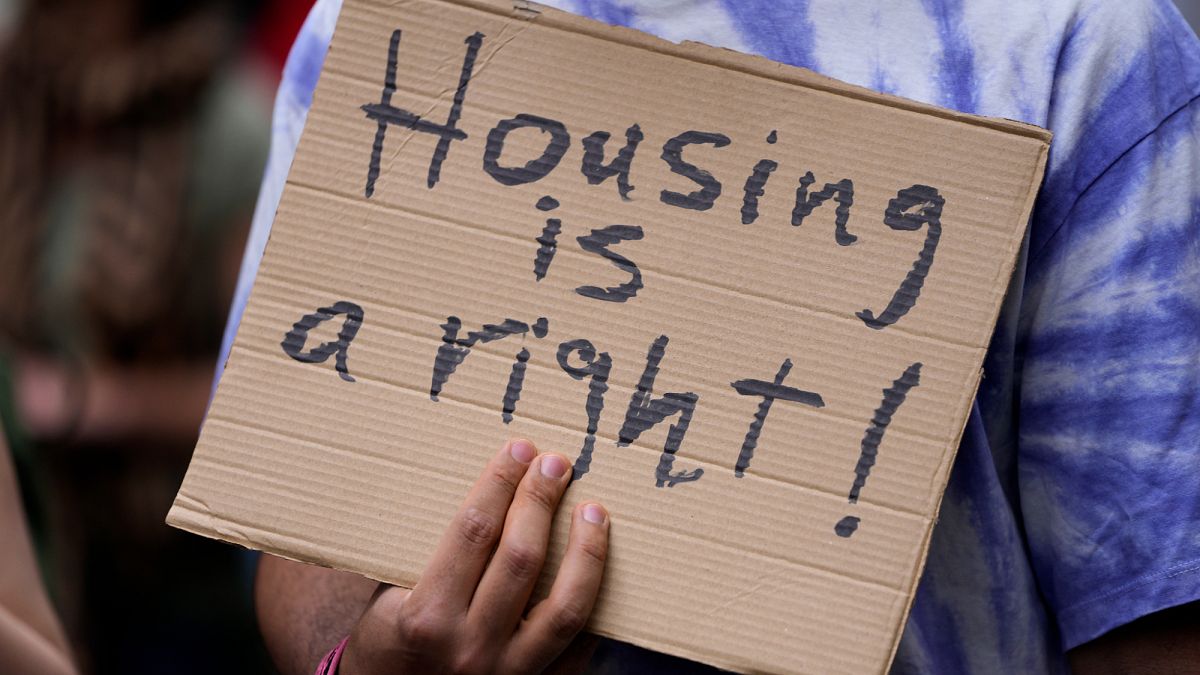The severity of the European Union’s housing crisis has made it harder for citizens to find a home, as a combination of housing supply shortages and high rents continues to be a major issue.
According to Eurostat, house prices went up by 48% and rents went up by 22% in 2023. Meanwhile, inflation drove overall prices up by 36%.
And the burden has largely affected younger people the most.
On average in 2023, EU households spent 19.7% of their disposable income on housing. In the same year, Eurostat data shows that young people make up a significant portion of the population that spend at least 40% of their income on housing.
Furthermore, 26% of young people in the EU live in overcrowded housing, 9.2% more than the overall population.
Speaking to Euronews, Housing Europe secretary general Sorcha Eduards said “We are compromising the capacity of youth to become independent, start their own lives, start their families. So again, in countries where we have a critical mass of limited-profit housing, we’ve seen that the age for becoming independent is indeed higher than countries that don’t have that.”
“So, I think this already signals that increasing the amount of limited-profit housing and improving access criteria helps young people actually access that (housing).”
The crux of solving this issue can be identified with a change in mentality.
“We’ve relied too much on market forces, and then of course since 2008 we’ve had, with the great financial crisis, a huge impact on the capacity of the construction sector, so there was a big reduction in the number of companies delivering but also an increase in difficulty of households in actually paying their bills,” says Eduards.
“And I think when you look at that, we wouldn’t be here, we wouldn’t be talking about the housing crisis if rents and house prices had stayed aligned with income. But we’ve had a huge, let’s say, differentiation now,” she notes.
When it comes to short-term rentals, Eduards explained that it “is another example where public policy has not kept up with societal needs. So, we are not making sure that our cities can house our students, that they can house our low and middle-income groups and that they can adequately house the elderly. We are allowing short-term lets to erode long-term lets.”
“We end up in a situation where we have empty apartments that are merely an investment. We are pushing students out of school, and families to the outskirts. We are pushing workers that are needed in the city centre to the outskirts, causing them a huge amount of stress.”
Great examples to follow
Some countries have already identified what the problem is. In the EU, some countries have already set up sustainable housing models. In Germany, 3.2 million people live in cooperatives, a not-for-profit model which is entirely democratic.
In Belgium’s Flanders region, poverty was reduced by 40% amongst people who have access to social housing.
Denmark has launched programmes to ensure that young people can have access to scholarships, and that they can avoid slipping into a long-term “couch-surfing” situation, putting them at risk of becoming homeless.
In the Netherlands, over 20–30% of residents live in limited-profit housing.
The ideas are there, says Eduards, but we need to rely a lot less on market forces and go back to viewing housing as a fundamental right.
“I think it’s a time for a change in the paradigm. It’s a time to build up a critical mass of housing that is responsible, that caters to our societal needs, and is not only about maximising short-term profit month-to-month”, she argues.
Read the full article here

















